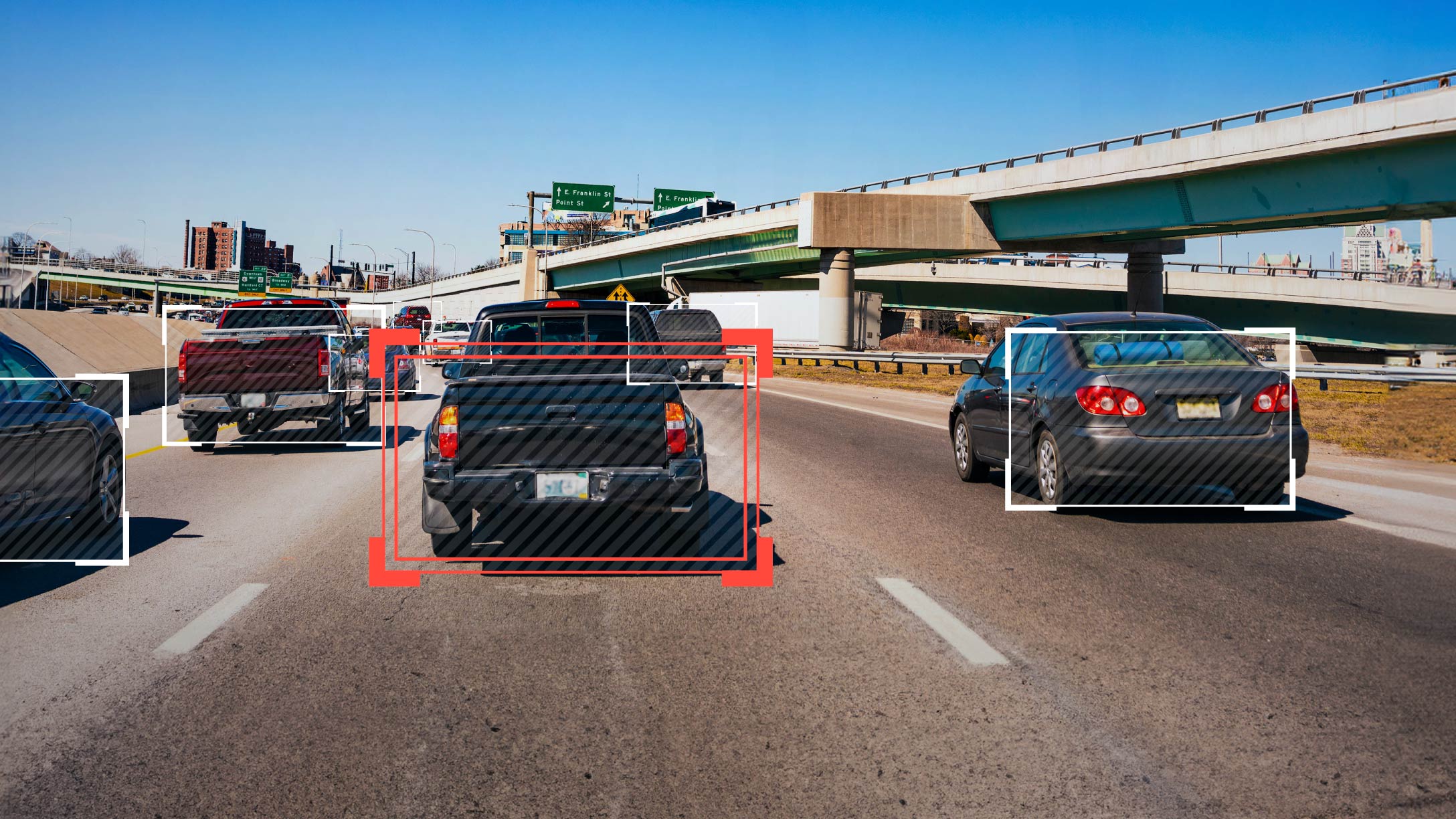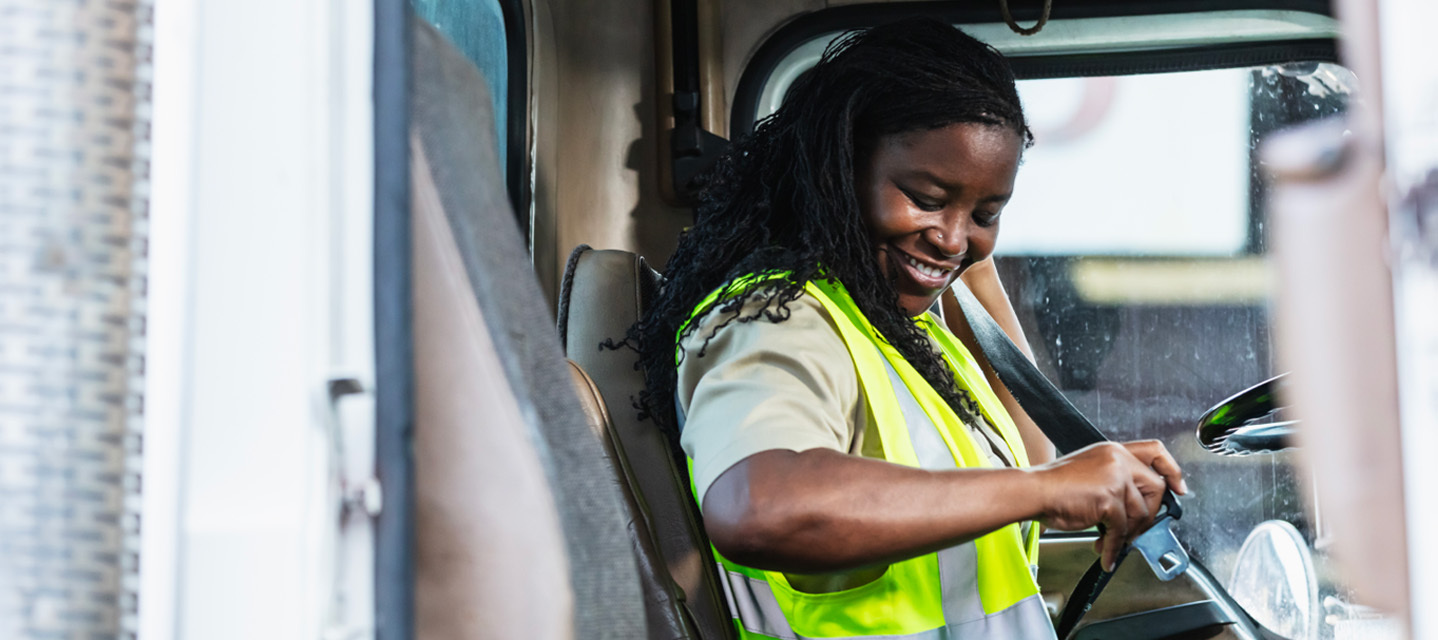What is video telematics?
Video telematics uses AI dash cams and telematics data to provide near real-time insights into fleet operations. This technology enhances safety, improves driver performance, streamlines incident management, and boosts operational efficiency by offering actionable data.

Content Marketing Manager • Corporate Marketing
Jul 3, 2024

Video telematics is a simple but powerful concept. Think of it as having eyes on your fleet 24/7 – seeing your fleet in real-time, understanding each driver’s behavior and every vehicle's path. That’s what video telematics offers. It captures moments and converts them into meaningful insights, combining video data with AI-powered analytics to provide a comprehensive view of your fleet's operations. Using fleet dash cams, you can capture high-definition video footage of the road and driver.
Did you know that fleets using in-cab video telematics1 solutions improved driver safety by 82% year-over-year.
The core of video telematics
Video telematics combines AI-powered dash cams with telematics sensors, such as GPS receivers, engine interfaces and accelerometers. Together, they monitor driver behavior and vehicle performance and turn raw data into actionable insights. You see the full picture—from vehicle movements to identifying unsafe driving behaviors. The goal is to optimize fleet operations, plan efficient routes, save fuel, and schedule maintenance more effectively.
Video telematics systems utilize fleet dash cams to capture high-definition video footage. These video telematics cameras are equipped with AI-powered sensors that detect and record risky behaviors such as distracted driving, not using a seatbelt, tailgating and harsh braking. The integration of this video data with telematics information, such as GPS location, speed and vehicle diagnostics, provides a comprehensive view of both the driver and vehicle performance.
How does video telematics work?
Video telematics integrates multiple technologies to create a comprehensive and actionable picture of fleet operations. Here's a straightforward breakdown of how it works:
Collecting data
Data collection is the first step in the process. AI-powered dash cams installed in fleet vehicles capture high-definition video footage of both the road and the driver. Equipped with sensors, these cameras detect and record key metrics such as speed, fast acceleration, harsh braking and location. Telematics devices add another layer by collecting data from GPS receivers, engine interfaces and accelerometers, providing detailed information on vehicle movements and performance. Detailed information on vehicle movements and performance is collected, laying the groundwork for further analysis.
Integrating telematics
Once the data is collected, the next step is integrating the video footage with telematics data. Visual evidence is combined with telemetric data like GPS location, speed, and engine diagnostics. The integrated data is then transmitted to a central platform for analysis. With a holistic view of what is happening in and around the vehicle, this approach gives detailed and accurate insights into fleet operations.
Real-time alerts and feedback
With integrated data, the system continuously analyzes it in real time using AI algorithms. When risky behaviors like distracted driving or harsh braking are detected, the system sends immediate alerts and feedback to drivers. Real-time responses help drivers correct their behavior on the spot. Fleet managers also receive instant notifications about incidents, allowing them to take action fast and make informed decisions quickly.
Storing and analyzing data
All video footage and telematics data are securely stored in the cloud, giving fleet managers access to review incidents, generate detailed reports, and gain valuable insights into overall fleet performance. Long-term analysis of this data is important for driver coaching, providing evidence and context for specific driving behaviors that need improvement. Analyzing this data helps to optimize routes, reduce fuel consumption and ensure timely maintenance.
The impact of video telematics
Understanding the impact of video telematics can provide a clearer picture of its value for fleet operators. Here are some specific areas where video telematics makes a big difference:
Making safety a priority
AI-powered dash cams and telematics sensors create a safety net around your fleet. Monitoring driver behavior in real-time allows for immediate corrections of risky actions like distracted driving or harsh braking. Fleets that employ telematics and dash cams experience a notable reduction in accidents, making the roads safer for everyone. In fact, fleets using Geotab’s safety features have shown a 40% reduction in collision rates.
Streamlining incident management
Road incidents are inevitable, but how they are managed makes all the difference. Clear video footage combined with telematics data offers an irrefutable account of events, speeding up dispute resolution and streamlining insurance claims. Fleet managers can quickly determine fault, protecting drivers from false claims and minimizing legal costs.
Improving driver performance
Detailed insights into driver behavior are a key requirement for effective coaching. Personalized feedback based on specific driving patterns helps drivers develop their skills. Providing feedback improves performance and instills a sense of accountability. Continuous learning and development become part of the fleet’s culture.
Maximizing operational efficiency
Efficiency is at the heart of successful fleet management. Video telematics provides actionable data that helps optimize routes, reduce fuel consumption and improve vehicle utilization. When fleet managers understand and act on these insights, they can achieve significant cost savings and boost productivity.
Encouraging positive behavior
Gamification and reward systems change safe driving from a requirement into a motivating challenge. Recognizing and rewarding drivers for good behavior improves morale and reinforces a culture of safety. Positive reinforcement leads to lasting improvements in how drivers conduct themselves on the road as well as overall fleet safety.
Realizing the potential of video telematics
Video telematics is a powerful tool for today’s fleet management. By integrating AI-powered dash cams and telematics data, fleet managers can improve safety and driver performance, streamline incident management, and strengthen overall operational efficiency. The insights gained from video telematics enable better decision-making and encourage a culture of continuous improvement.
Geotab's comprehensive video and telematics solutions offer the data and analytics needed to make informed decisions. Learn more about our dash cams and how they can benefit your fleet.
1 Automotive fleet How Fleets Are succeeding with telematics
Subscribe to get industry tips and insights

Content Marketing Manager • Corporate Marketing
.
Table of Contents
Subscribe to get industry tips and insights
Related posts

Collision avoidance systems: How fleets prevent incidents and improve safety
December 23, 2025
5 minute read
.png)
From the North Pole to the Highway: How AI and Predictive Insights Get Drivers Home for the Holidays
December 16, 2025
2 minute read
.jpg)
.png)
AI dash cams vs. traditional: Which delivers better fleet safety?
December 8, 2025
5 minute read

Elevating Worker Safety Through Simplicity: The OK Alone Story
December 3, 2025
2 minute read

The $4B Crisis: Video Intelligence as the Answer to Fleet Distraction
December 2, 2025
3 minute read